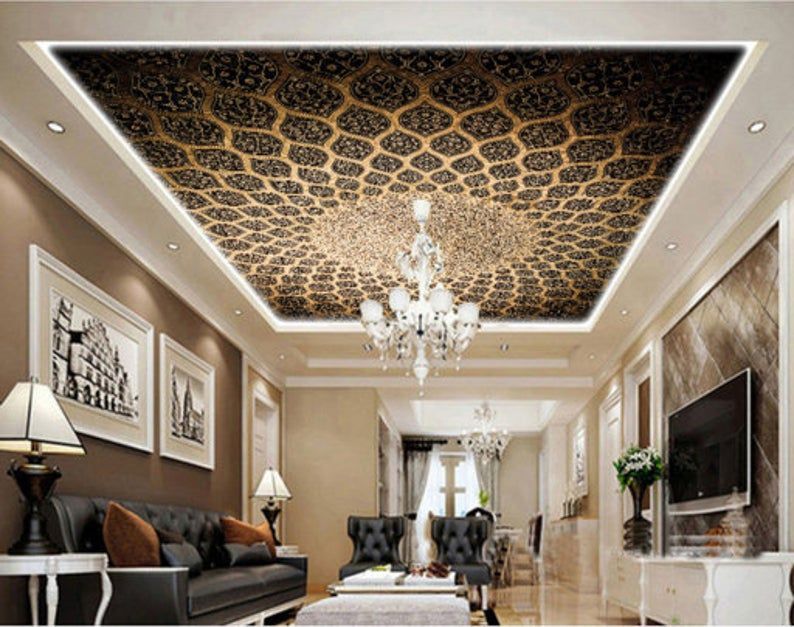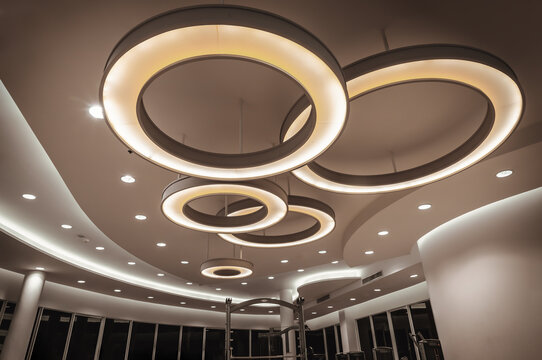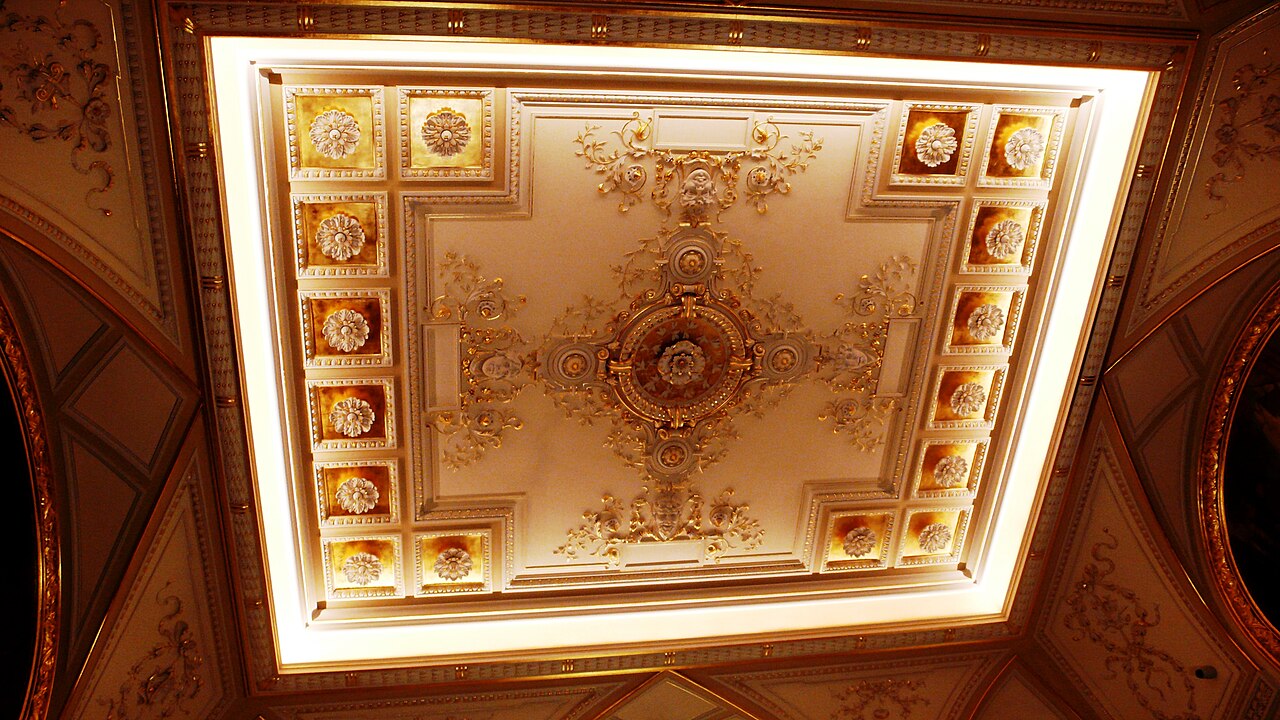
Importance of ceilings in interior design
Ceilings play a crucial role in interior design by significantly impacting the overall look, feel, and functionality of a space. Beyond simply covering the top of a room, ceilings contribute to the ambiance and aesthetic coherence of interiors. They can create a sense of spaciousness or intimacy, depending on their height, color, and texture. For instance, high ceilings can make a room feel grand and airy, while lower ceilings might create a more cozy and intimate atmosphere. Additionally, ceiling design can influence how natural and artificial light is distributed throughout a room, affecting both mood and practicality. Furthermore, ceilings are increasingly seen as opportunities for creative expression, allowing designers to introduce patterns, textures, and even innovative materials that add personality and style to a space. In essence, ceilings are integral elements of interior design that should not be overlooked, as they can significantly enhance the overall visual appeal and functionality of any room.Overview of how ceiling designs impact the overall aestheticOverview of how ceiling designs impact the overall aesthetic
Overview of how ceiling designs impact the overall aesthetic
Ceiling designs wield a profound influence on the overall aesthetic of a space, acting as a crucial element that ties together the entire interior design scheme. The choice of ceiling design can dictate the room’s atmosphere and style, whether it aims for a traditional, contemporary, or avant-garde look. For example, a coffered ceiling with intricate detailing can imbue a room with a sense of timeless elegance and architectural sophistication. On the other hand, a sleek, minimalist ceiling design featuring clean lines and hidden lighting fixtures can evoke a modern and uncluttered ambiance. The color, texture, and material of a ceiling also play pivotal roles in shaping the aesthetic experience; a wooden ceiling might add warmth and rustic charm to a space, while a glossy, reflective ceiling can create an illusion of expansiveness and luminosity. Moreover, innovative ceiling designs, such as those incorporating sustainable materials or integrated technology, not only enhance visual appeal but also contribute to the functionality and sustainability of the space. Ultimately, by carefully considering and designing the ceiling, interior designers and homeowners alike can significantly elevate the overall aesthetic and ambiance of any room.
Examples of minimalist ceiling designs
Minimalist ceiling designs are characterized by simplicity, clean lines, and a focus on essential elements that contribute to a sense of spaciousness and calm in a room. One prominent example of minimalist ceiling design is the use of recessed lighting fixtures that are flush with the ceiling surface, eliminating the need for dangling light fixtures or elaborate chandeliers. This approach not only enhances the minimalist aesthetic but also creates a clean, uncluttered look. Another common feature of minimalist ceilings is the use of monochromatic color schemes, such as white or light neutral tones, which help to visually enlarge the space and maintain a sense of airiness. In terms of architectural details, minimalist ceilings often feature smooth surfaces without ornate moldings or decorative elements, promoting a streamlined and contemporary appearance. Overall, minimalist ceiling designs prioritize functionality and simplicity, making them ideal for modern interiors seeking a clean and serene aesthetic.

Benefits of minimalist ceilings in modern interiors
Minimalist ceilings offer several benefits that cater to the preferences and practical needs of modern interiors. One key advantage is their ability to create a sense of spaciousness and openness within a room. By eschewing elaborate designs and ornate details, minimalist ceilings help to visually expand the perceived size of a space, making it feel larger and more inviting. This quality is particularly valuable in smaller or compact rooms where maximizing space is essential.
Additionally, minimalist ceilings contribute to a clean and uncluttered aesthetic, which aligns well with contemporary design preferences. Their streamlined appearance enhances the overall simplicity and coherence of modern interiors, allowing other design elements, such as furniture and artwork, to stand out without competing for visual attention.
Practically, minimalist ceilings are often easier to maintain and clean compared to more intricate designs that may accumulate dust or require specialized cleaning methods. The simplicity of minimalist ceilings also lends itself well to integrating modern technologies, such as recessed lighting systems or concealed speakers, which can enhance functionality without compromising the minimalist aesthetic.
Moreover, minimalist ceiling designs are versatile and adaptable to various architectural styles and interior themes. Whether in residential or commercial settings, their understated elegance and timeless appeal make them a popular choice among homeowners, designers, and architects aiming to achieve a contemporary and harmonious living or working environment
How statement ceilings can transform a room
Statement ceilings have the remarkable ability to completely transform the ambiance and character of a room by turning what is traditionally a blank canvas into a focal point of design. Unlike conventional ceilings that often go unnoticed, statement ceilings grab attention and add a sense of drama and personality to a space. They can be achieved through bold colors, intricate patterns, textured finishes, or even architectural elements like beams or coffered designs. By drawing the eye upwards, statement ceilings create a sense of height and expansiveness, making rooms feel larger and more dynamic. In addition to visual impact, statement ceilings can influence the overall mood of a room; for instance, a ceiling adorned with a vibrant color can inject energy and warmth, while a ceiling featuring soft, muted tones can create a calming and serene atmosphere. Whether in residential homes or commercial spaces, statement ceilings offer an opportunity for creativity and individual expression, allowing designers and homeowners to personalize their interiors and evoke specific emotions within the room’s occupants. Overall, statement ceilings serve as powerful design elements that can elevate the aesthetic appeal and transform the entire feel of a room, making them a popular choice for those seeking to make a bold and memorable statement with their interior spaces.
Role of technology in modern ceiling design
In modern ceiling design, technology plays a pivotal role in enhancing both the functionality and aesthetic appeal of interior spaces. One of the primary ways technology integrates into ceilings is through advanced lighting systems. LED lighting, for example, allows for energy-efficient illumination that can be seamlessly embedded into the ceiling structure, creating a sleek and minimalist look. Smart lighting systems further elevate this functionality by offering customizable brightness levels, color temperatures, and even remote control capabilities via smartphone apps or voice commands.
Beyond lighting, technology in ceiling design extends to audiovisual integration. Concealed speakers and sound systems can be discreetly installed within ceilings, providing immersive audio experiences without compromising on aesthetics. This integration is particularly valuable in home theaters, conference rooms, or open-plan living areas where maintaining a clean and uncluttered look is desired.
Moreover, advancements in materials and manufacturing techniques enable the creation of innovative ceiling surfaces. Textured or patterned acoustic panels can improve sound absorption while adding visual interest, contributing to both comfort and style in interior spaces. Additionally, the use of digital projection mapping on ceilings allows for dynamic displays and artistic installations, transforming ceilings into interactive canvases that engage and inspire.
Overall, technology in modern ceiling design not only enhances functionality and efficiency but also opens up new creative possibilities for architects, designers, and homeowners to personalize and optimize their living and working environments. As technology continues to evolve, so too will its integration into ceiling design, shaping the future of interior spaces with innovative solutions that prioritize both form and function.

Benefits of technology-enhanced ceilings in homes and offices
Technology-enhanced ceilings offer a range of benefits that enhance both the functionality and overall experience of homes and offices. One significant advantage is improved efficiency in lighting and energy usage. LED lighting systems, for example, not only provide customizable illumination but also consume less energy compared to traditional lighting fixtures, contributing to lower utility costs and environmental sustainability.
In terms of comfort and convenience, technology-enhanced ceilings often incorporate smart home features. Integrated sensors can adjust lighting levels based on natural light, occupancy, or time of day, optimizing both comfort and energy efficiency. Additionally, automated shading systems controlled through smart devices can regulate natural light and temperature, enhancing comfort and reducing reliance on heating and cooling systems.
For productivity and collaboration in office settings, technology-enhanced ceilings can integrate audiovisual equipment seamlessly. Built-in speakers and microphones improve acoust it
Rise of multi-functional spaces in interior design
The rise of multi-functional spaces in interior design reflects a shift towards optimizing living and working environments for flexibility, efficiency, and versatility. Modern lifestyles often demand adaptable spaces that can serve multiple purposes throughout the day. This trend is especially prevalent in urban settings where space is limited and the cost of square footage is high. Multi-functional spaces blur the boundaries between traditional room functions, such as living rooms doubling as home offices or guest rooms equipped with fold-out beds for occasional use.
From a practical standpoint, designing multi-functional spaces allows homeowners and designers to maximize the utility of every square foot. For instance, a dining area that converts into a workspace during the day can accommodate both social gatherings and remote work needs seamlessly. Incorporating storage solutions, such as built-in cabinets or modular furniture, further enhances the efficiency of multi-functional spaces by reducing clutter and optimizing organization.
Moreover, multi-functional spaces promote a sense of adaptability and responsiveness to changing needs. They can easily accommodate evolving family dynamics, lifestyle changes, or unexpected guests without sacrificing comfort or style. This flexibility is particularly valued in modern office environments where agile workspaces support collaborative projects, individual focus work, and team meetings within the same area.
Overall, the rise of multi-functional spaces reflects a practical and innovative approach to interior design that prioritizes efficiency, versatility, and user experience. By embracing this trend, homeowners and businesses alike can create environments that not only meet current needs but also anticipate future demands in a dynamic and rapidly evolving world.
Multi-functional ceiling designs exemplify the innovative fusion of aesthetic appeal with practical utility in interior spaces. One notable example is the integration of retractable or drop-down screens and projectors in ceilings, transforming living rooms or conference areas into versatile multimedia hubs suitable for entertainment, presentations, or virtual meetings. This approach not only optimizes space but also enhances the functionality of rooms by eliminating the need for separate installations that can clutter the environment.
Another trend in multi-functional ceiling designs involves the incorporation of adjustable lighting systems. These systems allow for dynamic control over brightness levels, color temperatures, and even mood lighting, catering to various activities and atmospheres throughout the day. For instance, a home office might utilize bright, cool-toned lighting for productivity during the day and softer, warmer hues for relaxation in the evening, all managed through integrated smart controls.
Additionally, multi-functional ceilings can feature innovative storage solutions such as recessed compartments or shelving units. These elements not only maximize floor space but also contribute to a clean and uncluttered aesthetic by providing discreet storage options for items ranging from books and decor to electronics and office supplies. Such designs are particularly valuable in smaller living spaces or offices where efficient use of vertical space is essential.
Furthermore, advanced acoustic panels integrated into ceilings offer dual benefits of sound insulation and aesthetic enhancement. These panels can mitigate noise pollution within open-plan offices or residential areas while simultaneously adding texture and visual interest to the ceiling surface. This integration supports productive work environments and enhances overall comfort and privacy in shared spaces.

Popular colors for ceilings in 2024
In 2024, the trend for ceiling colors continues to evolve, reflecting a shift towards both timeless classics and adventurous modern choices. Soft, muted tones such as light grays, subtle creams, and warm whites remain perennial favorites for their ability to create a sense of spaciousness and tranquility while blending seamlessly with various interior styles. These neutral shades provide a versatile backdrop that complements bold or minimalist decor, making them a practical choice for homeowners aiming to achieve a balanced and harmonious look.
On the other end of the spectrum, deeper and richer colors are increasingly making their mark on ceiling designs. Shades like navy blue, charcoal gray, and even deep forest green are gaining popularity for their dramatic effect and ability to add it
